Cleobury Mortimer, Shropshire
Up to 1834
A parliamentary report of 1777 recorded parish workhouses in operation at Cleobury Mortimer with accommodation for up to 60 inmates.
Farlow's parish workhouse was located at the west side of Oreton Common.
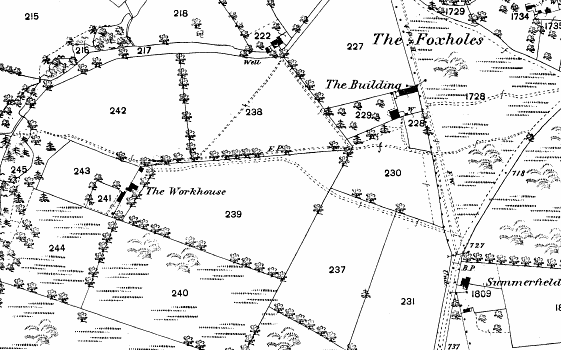
Farlow former parish workhouse site, 1884.
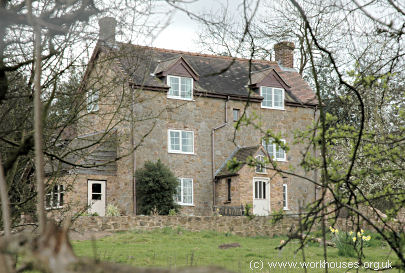
Farlow former parish workhouse, 2007.
© Peter Higginbotham.
After 1834
The Cleobury Mortimer Poor Law Union formally came into being on 15th July 1836. Its operation was overseen by an elected Board of Guardians, 20 in number, representing its 17 constituent parishes as listed below (figures in brackets indicate numbers of Guardians if more than one):
County of Salop:
Aston Botterel, Cleobury Mortimer (2), Coreley, Highley, Hopton Wafers, Kinlet, Loughton, Milso, Neen Savage, Neen Solars, Silvington, Stottesden (2), Whenthill.
County of Worcester:
Bayton, Mamble, Rock (2).
County of Hereford:
Farlow.
Later Addition: Woodhouse (from 1862).
The population falling within the Union at the 1831 census had been 8,703 — ranging from Silvington (population 30) to Cleobury Mortimer itself (1,716). The average annual poor-rate expenditure for the period 1834-36 had been £2,990 or 6s.10d. per head of the population.
The Cleobury Mortimer Union adopted the existing Cleobury parish workhouse for its use and in 1837 the Poor Law Commissioners authorised the relatively modest expenditure of £450 on its upgrading. The workhouse, which could accommodate 150 inmates, was in an isolated situation about a quarter of a mile from the town. The workhouse location and layout are shown on the 1902 OS map:
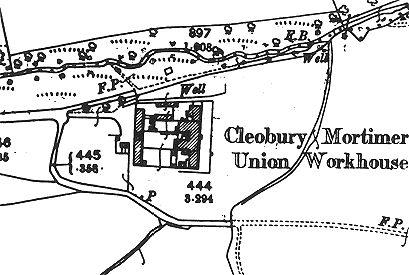
Cleobury Mortimer workhouse site, 1902.
The workhouse appears to have had a U-shaped main block, with side wings, facing to the east. Another building, at the west of the site, may have been an addition erected in 1848 containing a brewhouse, cleansing house, vagrants' and receiving wards and a dead house. The area in between the two buildings was divided into separate airing yards for the different classes of inmate.
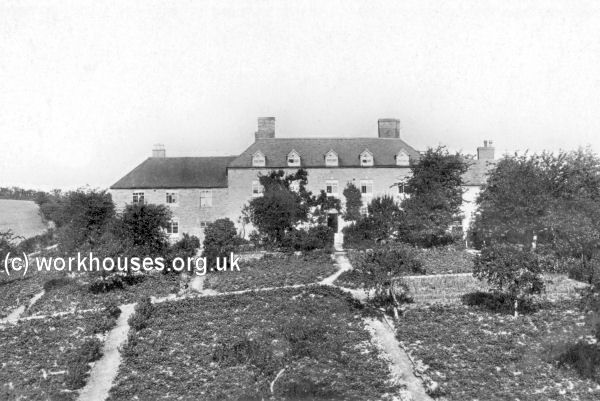
Cleobury Mortimer workhouse site, from the east, c.1910.
© Peter Higginbotham.
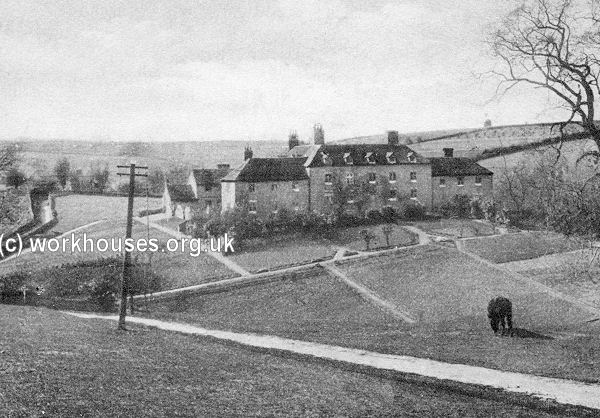
Cleobury Mortimer workhouse site, from the east, c.1910.
© Peter Higginbotham.
In August 1932, the former workhouse was taken over for use as a youth hostel and was known as Styper House. The hostel closed on 30th September 1936.
At the start the Second World War, the old workhouse site was used as a camp for refugees from Europe. The story of one family from the Czech town of Karlsbad has been documented by Ray Prichard, a short account of which is given below.
After the German forces arrived, Franz and his family were placed under house arrest. His wife then died but her dying wish was that he take her identical twin sister as his wife and escape with their 10-year-old daughter Marianna. One cold winter's day the stepmother and daughter dress themselves in as many clothes and small belongings as it was possible to wear beneath a large coat without being detected and pretended to go shopping with an empty basket. Suspicions were not aroused and the pair were smuggled out by the resistance. All three eventually arrived in England, and at the end of 1939 became residents for a while at what they described as the "Old Workmann House" refugee camp at Cleobury Mortimer. They were later housed in a small flat in Loughborough where Franz maintained a spartan regime — no fires in winter, for example — to show his solidarity with those still suffering in his homeland.
Unfortunately, Marianna's stepmother became ill and died, after which Franz took to drink, resulting in the neglect of his daughter. However, she was taken in hand by Catherine ('Kitty') Hemming, the redoubtable stewardess of a neighbouring bar and club, whose daughter Kathleen Margaret Hemming was the same age as Marianna. Margaret, as she was usually known, taught Marianna English with the help of Ladybird books which were produced in Loughborough. By 1945, Franz had also died, and Marianna and her adoptive family had moved to Handsworth Wood, Birmingham.
Marianna died shortly before the iron curtain was lifted and was never able to return home. Margaret died in 2002. Her son, Ray Prichard, still has a treasured memory of Marianna (his godmother) — a tin clockwork cat that rolls along with a ball between its paws then stops while the tail rotates to make the cat roll over - beneath is printed "Made in Czechoslovakia"
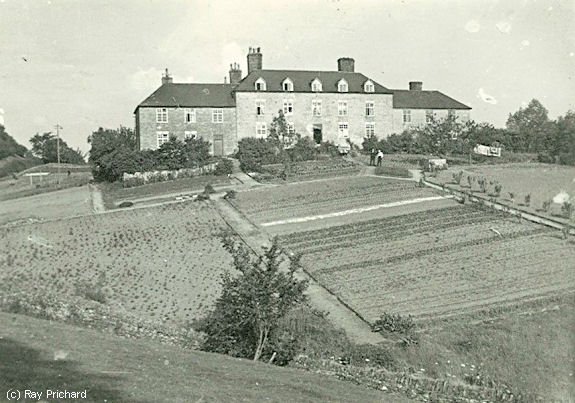
Cleobury Mortimer former workhouse site from the east, late 1930s.
© Ray Prichard.
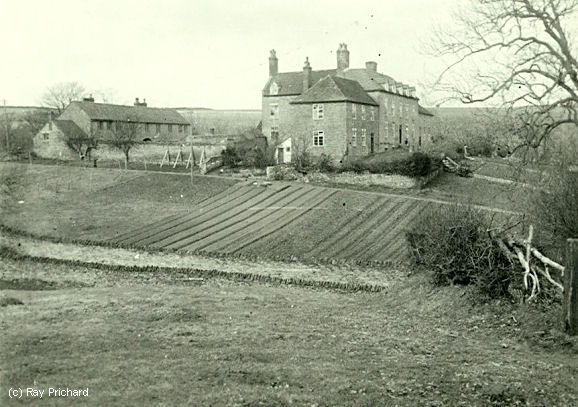
Cleobury Mortimer former workhouse site, from the south-east, late 1930s.
© Ray Prichard.
The former workhouse buildings have now been demolished and a caravan park now occupies the site.
Staff
Inmates
Records
Note: many repositories impose a closure period of up to 100 years for records identifying individuals. Before travelling a long distance, always check that the records you want to consult will be available.
- Shropshire Archives, Castle Gates, Shrewsbury, Shropshire SY1 2AQ. Please note that records may contain gaps or have access restrictions - please check before visiting. Guardians' minutes (1836-1930); Ledgers (1836-1930); Apprenticeship papers (1827-37); Pauper lists at Union formation (1836); Admissions to Salop Infirmary (1836-81); etc.
Bibliography
- Higginbotham, Peter The Workhouse Encyclopedia (2014, The History Press)
Thanks
- Thanks to Ray Prichard for the information about the Maxants and their link to the Cleobury Mortimer workhouse.
Links
- None.
Unless otherwise indicated, this page () is copyright Peter Higginbotham. Contents may not be reproduced without permission.


